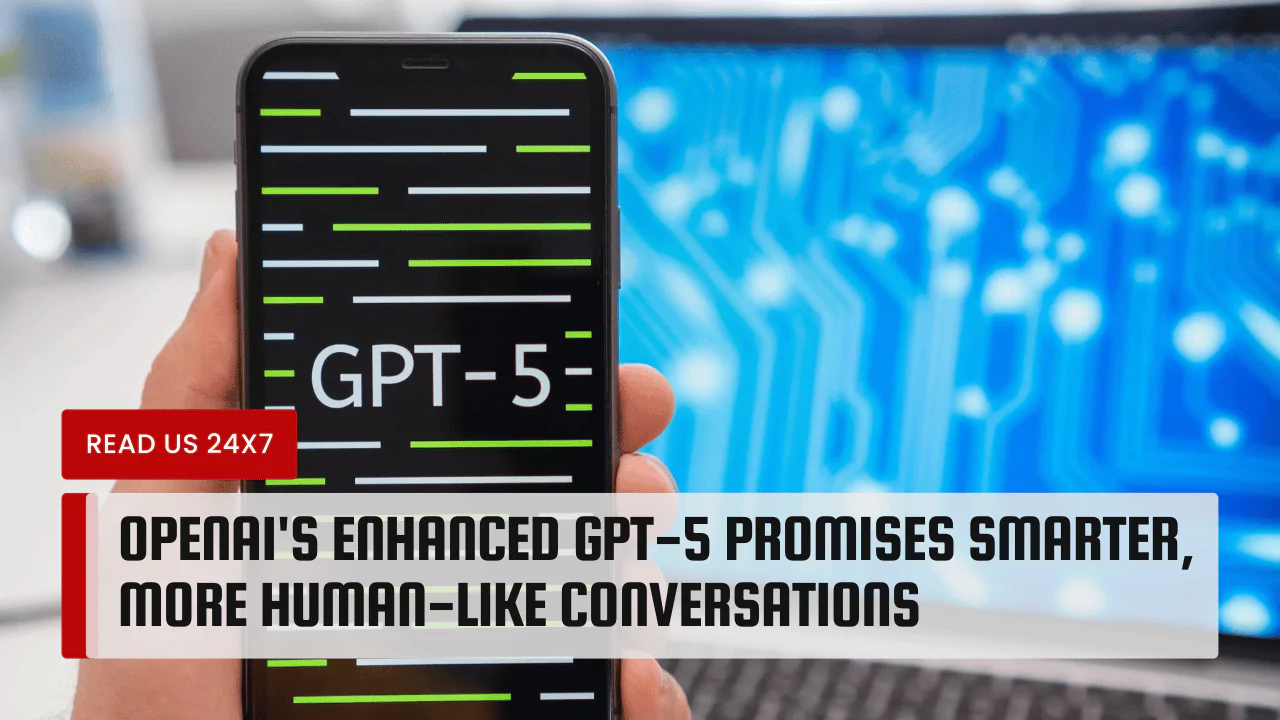Are you tired of talking to AI that just doesn’t get it? Good news is on the horizon. OpenAI plans to release a new, improved model called GPT-5 this mid-year. This blog will show how GPT-5 promises to make conversations with AI feel more like chatting with a friend.
Keep reading for all the exciting details!
OpenAI’s Plans to Release a “Materially Better” GPT-5 Model
OpenAI plans to release a significantly improved GPT-5 model. Mid-year release is expected, intended to replace GPT-4.
Sources Say Mid-year Release Expected
Sources close to OpenAI have shared exciting news: the enhanced GPT-5 is set to launch by the middle of this year. This next version aims to be “materially better” than its predecessor, GPT-4.
Fans and users of artificial intelligence chatbots are eagerly awaiting this update.
Some enterprise customers already got a sneak peek at what GPT-5 can do. They saw demos showing off how much smarter and more efficient ChatGPT will become with this upgrade. These improvements promise to make conversations feel more natural and human-like.
With the mid-year release just around the corner, anticipation is building. The new GPT-5 model represents significant progress in machine learning, aiming to set new standards in natural language processing and artificial intelligence technologies.
Intended to Replace GPT-4
OpenAI plans to launch GPT-5, aiming to outshine its predecessor, GPT-4. The new model promises faster and more accurate responses, addressing the need for smarter AI chatbots. With improvements in artificial general intelligence and natural language processing (NLP), this upgrade is set to revolutionize how we interact with machines.
CEO Sam Altman himself criticized GPT-4 for not meeting high expectations. He stressed the importance of moving forward and enhancing AI technology continuously. Thus, GPT-5 emerges as a response to these criticisms, crafted to deliver a more refined experience in tasks ranging from simple queries to complex problem-solving abilities.
This leap towards an advanced artificial intelligence model showcases OpenAI’s commitment to innovation and excellence in the field of generative pre-trained transformers. By focusing on energy efficiency and improved functionality, GPT-5 is positioned to be a pivotal player in shaping the future of AI chatbots and beyond.
Controversies Surrounding GPT-4
GPT-4 sparked controversies due to CEO Sam Altman’s comments and criticisms from AI experts.
CEO Sam Altman’s Comments
CEO Sam Altman wasn’t shy about sharing his thoughts on GPT-4. He said it “kind of sucks.” This shows he’s serious about improving AI technology. Altman stressed the importance of critiquing past updates for better AI in the future.
He promised more updates soon, which might not all be part of GPT-5.
Altman has also talked about AI dangers before. Some aspects of this technology keep him awake at night. His comments highlight a commitment to safety and innovation in AI development.
Criticisms From AI Experts
AI experts raise concerns about the lackluster performance of GPT-4, emphasizing the urgent need for advancements. Users and internal personnel at OpenAI express dissatisfaction with deteriorating outputs from GPT-4, anticipating a more dependable and impressive GPT-5 to cater to public and enterprise expectations.
What to Expect from the New GPT-5 Model?
OpenAI plans to release a “materially better” GPT-5 model, which is expected to replace GPT-4 and bring improved functionality and efficiency while addressing previous issues. The potential impact on AI chatbots is also anticipated with the mid-year release.
Improved Functionality and Efficiency
The upcoming GPT-5 model promises improved functionality and efficiency compared to its predecessor, GPT-4. This new version aims to address previous issues and deliver smarter, more human-like conversations.
OpenAI’s mid-year release is highly anticipated as it seeks to replace the current GPT-4 model with a substantially better version.
OpenAI plans for the GPT-5 model to exhibit enhanced performance and demonstrate significant improvements in its functionality, aiming to have an impact on AI chatbots worldwide. The company remains focused on safety testing internally and further “red teaming” before making the advanced model available to the public, continuing their commitment to delivering high-quality, reliable AI technology that sets new benchmarks in open-domain language understanding.
Addressing Previous Issues
OpenAI acknowledges the criticisms of GPT-4 and aims to enhance functionality and efficiency in the upcoming GPT-5 model. Safety testing and internal “red teaming” will be conducted, reflecting OpenAI’s commitment to continuous improvement in AI technology.
GPT-5, currently under training by OpenAI, seeks to address previous issues by striving for improved functionality and efficiency. The company emphasizes the importance of safety testing and internal evaluation prior to release, aligning with their dedication to advancing AI technology.
Potential Impact on AI Chatbots
GPT-5 could revolutionize AI chatbots, making them smarter and more human-like. Enterprise customers who got a demo are already seeing the potential enhancements to ChatGPT. Sam Altman’s emphasis on continuous improvement in AI tech aligns with GPT-5’s planned mid-year release, promising better customization and personalization.
AI chatbots stand to benefit significantly from GPT-5’s advancements. With improved capabilities, they could provide more tailored responses in diverse contexts, thus enhancing user experiences.OpenAI’s focus on customization underscores its commitment to advancing AI technology for practical applications like chatbots, potentially transforming how users interact with them.



